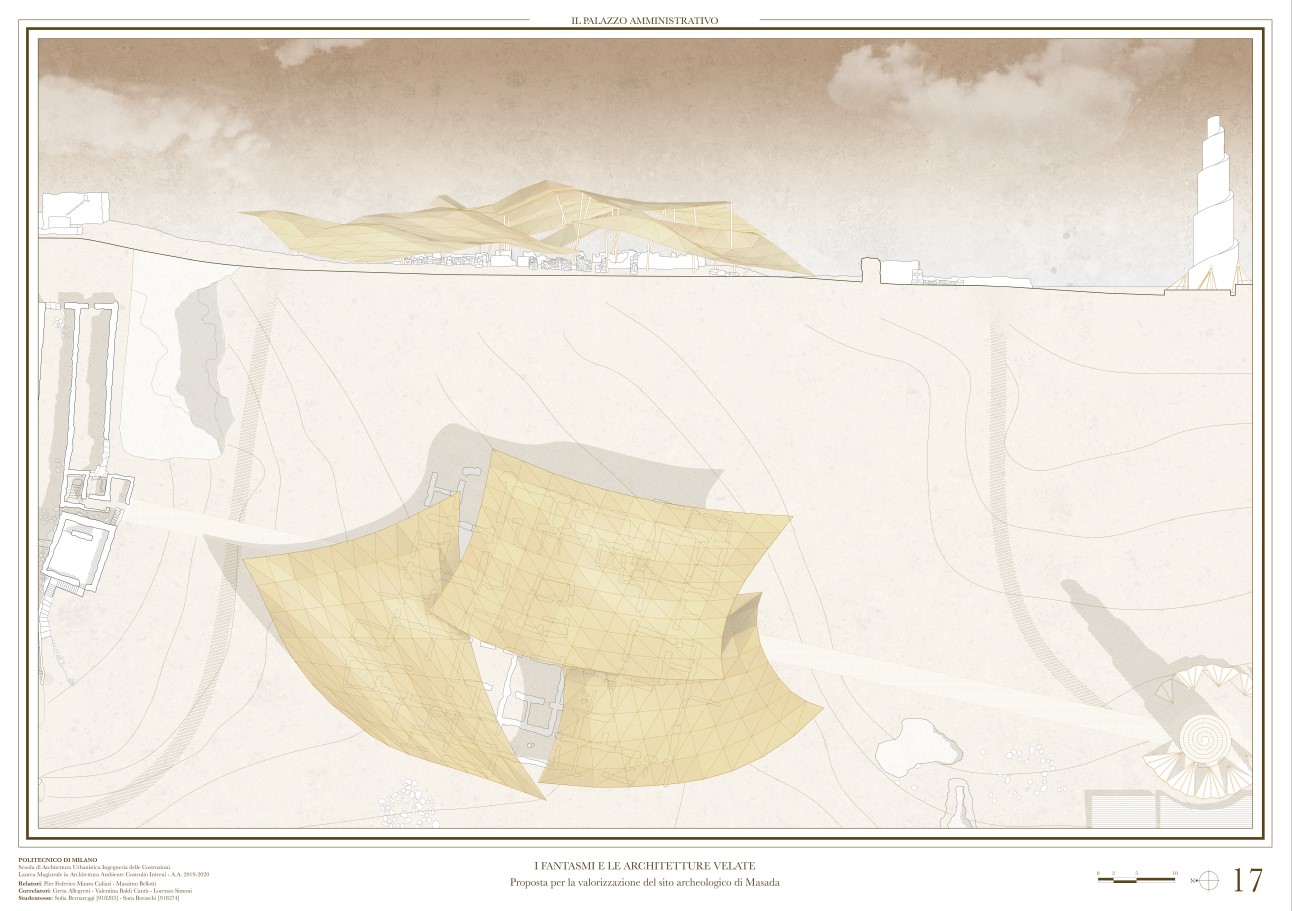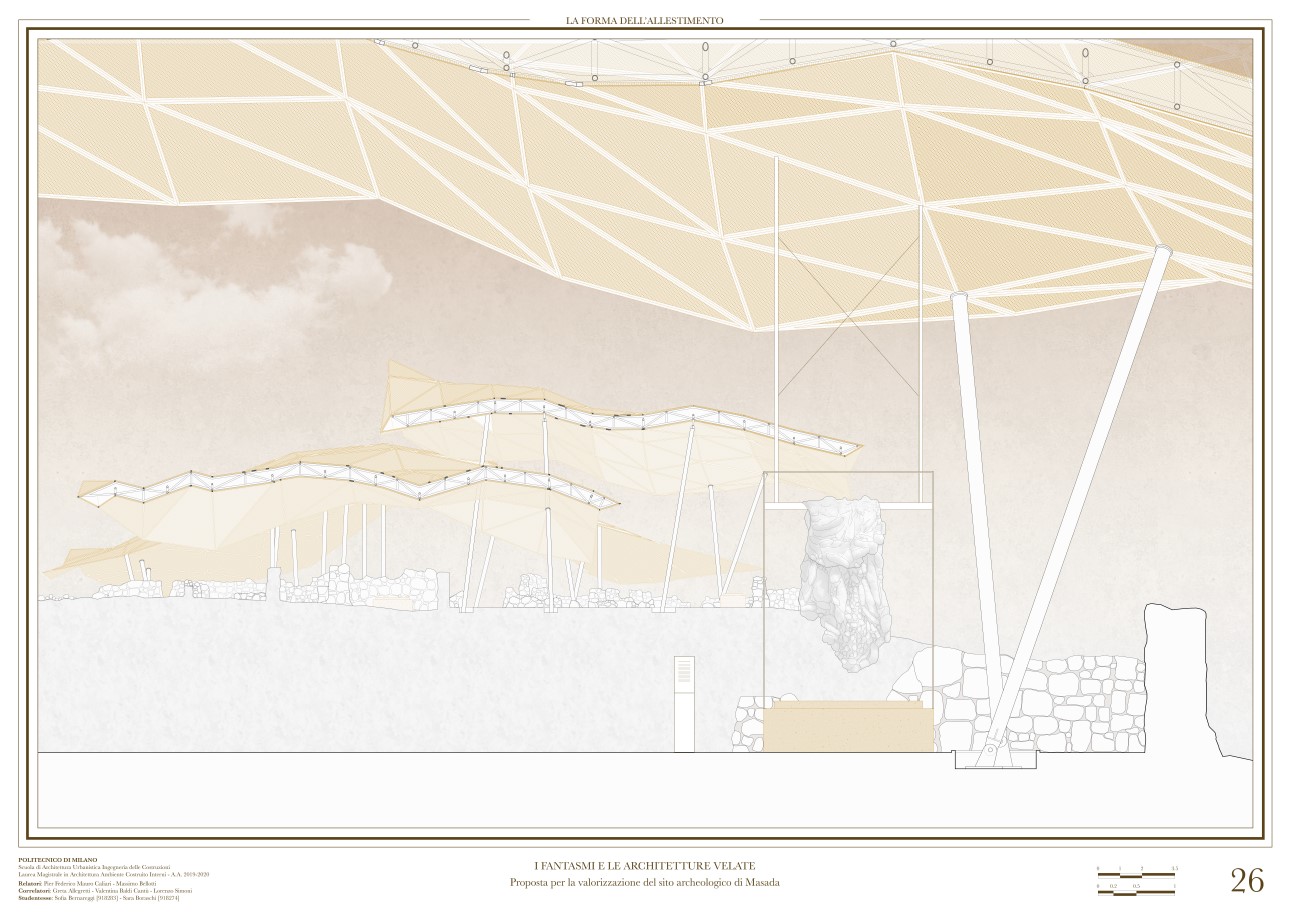Tesi di Laurea

I FANTASMI E LE ARCHITETTURE VELATE.
Proposta per la valorizzazione del sito di Masada
Candidati
Sofia Bernareggi, Sara Boraschi
Relatore
Pier Federico Caliari
Correlatore
Massimo Bellotti, Greta Allegretti, Valentina Baldi Cantù, Lorenzo Simoni
Anno Accademico
2019/2020
Nel deserto del Negev, in prossimità delle coste del Mar Morto, si erge su una cima dell’altopiano israeliano il sito archeologico di Masada.
In origine pensata come città-fortezza da Erode, il grande re costruttore, fece da sfondo a uno dei più celebri episodi della storia romana in terre straniere; come narra Giuseppe Flavio ne “La Guerra Giudaica”, la legione romana guidata da Lucio Flavio Silva, dopo mesi di preparazione all’assedio, una volta raggiunta la cima, si trovò di fronte al suicidio di massa del popolo zelota, che al momento occupava la piana.
La fortezza versò in uno stato di abbandono fino ai primi dell’Ottocento quando partirono gli interventi di scavo, mappatura e recupero dei resti archeologici.
Ad oggi il parco archeologico è noto a livello internazionale e conta un grande numero di visitatori; sono le rovine degli antichi palazzi erodiani e i meravigliosi scorci panoramici sulle aride terre desertiche che costituiscono l’oggetto della visita.
Al fine di valorizzare un luogo dove convivono storia, cultura e bellezza, con il progetto di tesi si propone la realizzazione di un sistema, che relazionandosi con le rovine, definisce un nuovo grado di musealizzazione del sito archeologico. Il ricordo degli Zeloti si concretizza attraverso un’architettura effimera che con la sua leggerezza e le sue tonalità sembra svanire nel paesaggio naturale.
The archeological site of Masada stands on an isolated plateau in the Judean Desert of Negev near to the shores of the Dead Sea.
In the beginning Herod the Great conceived this area as an independent fortress and one of the most important events of the Roman history took place right in this location. At the time of the siege, Masada was occupied by the Zealots, a group of Jewish people. According to the events written by Flavius Josephus in “The Jewish War”, when the Roman soldiers, led by Lucius Flavius Silva, managed to reach the top of the fortress, they found out the mass suicide committed by the Zealots.
The fortress remained abandoned until the early nineteenth century: two American students discovered the site and after this the Israeli Institutions started some works of excavation, mapping and conservation of the archeological area.
Nowadays the Park of Masada is internationally well- known, and a large number of tourists comes to visit the site. The ruins of the ancient palaces built by Herod and the extraordinary panoramic views over the desert are the reasons why visitors come to Masada.
In order to enhance the archeological site, characterized by its history, culture and beauty, the thesis project wants to design a new architectural system. The intervention gives a new treatment of the museum space idea to visitors. The Zealots’ memory comes true through an ephemeral architecture: the lightness and the shades of the structures seem to vanish behind the natural landscape.





















